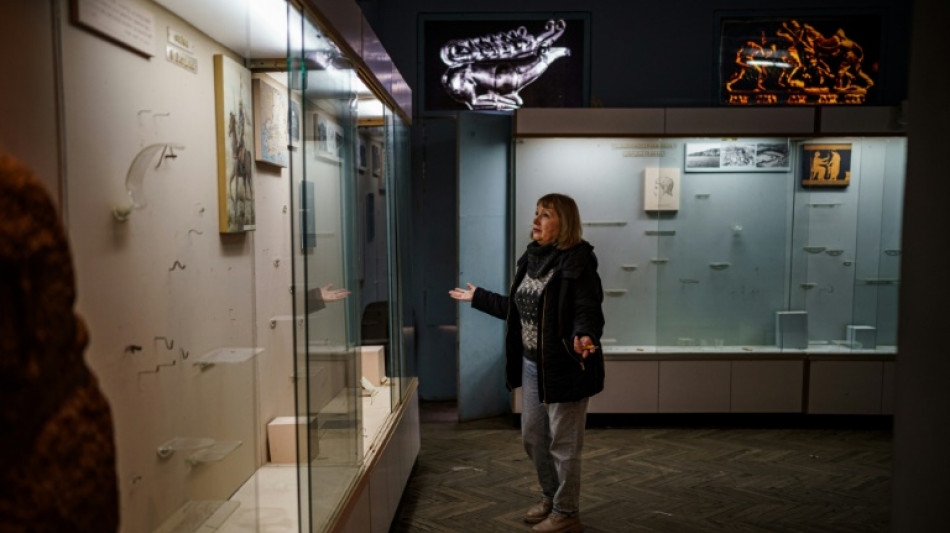
Ukraine museum in 'shock' after Russian looting spree

Shattered display cases and empty shelves highlight the extent of Russian looting at a history museum in the southern Ukrainian city of Kherson where Olga Goncharova has worked for four decades.
Since Russian forces retreated last month after an eight-month occupation, Goncharova, its acting director, has been trying to account for the damage and theft –- a process she described as "a stab in the heart".
"When I saw this, it was a very scary shock," she told AFP during a tour of exhibition rooms that have been left in shambles.
"I realised very sharply and vividly from this example of vandalism that the great Russian culture that they talk about doesn't exist," she said, decrying how the soldiers could have been "so cruel to the museum".
The Kherson Regional Museum is one of four cultural institutions in the city that saw widespread pillaging by Russian troops, Human Rights Watch said in a statement this week.
The others are the Kherson Regional Art Museum, St Catherine's Cathedral and the Kherson Region National Archives.
"Kherson residents had already suffered months of torture and other abuses during the Russian occupation, and then watched their cultural and historical heritage get packed up and taken away," said Belkis Wille, HRW's crisis and conflict associate director.
"The people of Ukraine are entitled to have all the stolen objects returned, and to justice for their theft."
- 'Everything was broken' -
Specialising in local history, the Kherson Regional Museum housed about 180,000 objects in its collection prior to Russia's invasion in February, and Goncharova had personally worked on preserving many of them.
"I didn't know any other job. This is my second or maybe my first home. So all the exhibits that were here have passed through my hands," she said.
"All the photographs, all the documents, everything that was here, it was all very familiar to me. And when I came in, the feeling was unlike anything I've felt before. It was like a stab in the heart."
She ticked off a long list of items that are now gone -- gold, rare coins, weapons, military medals.
"Everything which was valuable, materially, they stole, kidnapped and moved to an unknown direction," she said.
Ukrainian prosecutors suspect her predecessor, Tetiana Bratchenko, of having collaborated with Moscow's forces. She is understood to have fled to Russia as Ukrainian troops were closing in on the city.
Over the summer, Russians in civilian clothes visited the museum "numerous times" and used the venue to mark Russian National Flag Day in August, HRW said in its statement, citing testimony from a security guard.
In October, a larger group of around 70 people arrived and, as Russian soldiers stood guard, drove objects away in three trucks, HRW said.
The rights group said it had "identified at least 450 objects as missing from the glass display case labels, including Scythian gold, other gold and silver, imperial Russian medals, and coins".
Other missing objects include paintings, furniture and Soviet military uniforms.
Ukrainian media has reported that pillaged items have since reappeared on display in Crimea, the Black Sea peninsula annexed by Russia in 2014.
Goncharova said it was not just the scale of the looting that disturbed her, but the reckless manner in which it was carried out.
"It was barbaric. They used crowbars to undermine everything," she said.
"Everything was broken up and destroyed."
K. Petersen--BTZ

 London
London

 Manchester
Manchester
 Glasgow
Glasgow
 Dublin
Dublin
 Belfast
Belfast
 Washington
Washington
 Denver
Denver
 Atlanta
Atlanta
 Dallas
Dallas
 Houston Texas
Houston Texas
 New Orleans
New Orleans
 El Paso
El Paso
 Phoenix
Phoenix
 Los Angeles
Los Angeles



